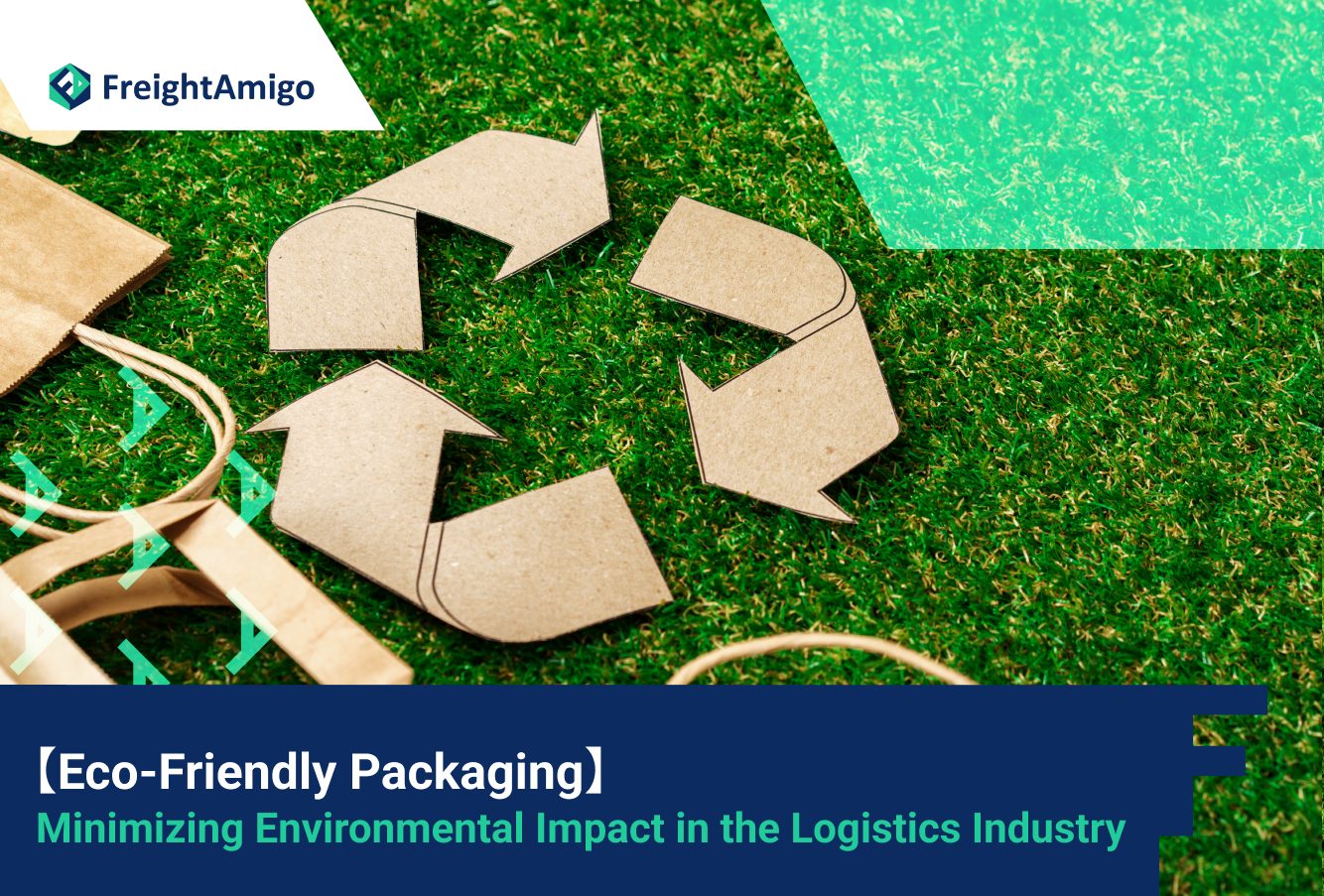Packaging plays a crucial role in the logistics industry, ensuring that products are protected during transportation and storage. However, traditional packaging materials often have a significant negative impact on the environment. Materials like plastic and styrofoam are non-biodegradable and take hundreds of years to decompose. Additionally, the production of these materials contributes to pollution and greenhouse gas emissions.
The extensive use of plastic packaging in the logistics industry has led to a global waste crisis. Landfills are overflowing with non-recyclable packaging waste, and oceans are littered with plastic debris. This pollution has devastating consequences for marine life and ecosystems. It is clear that a shift towards eco-friendly packaging is necessary to minimize the environmental impact of the logistics industry.
Author Name: Aiden Ng– Marketing Analyst at FreightAmigo
Want to compare the best Express, Air Freight, Sea Freight, Rail Freight & Trucking rates so as to have better control on cost?
Introduction to eco-friendly packaging
Eco-friendly packaging, also known as sustainable packaging, is designed to minimize its environmental footprint throughout its lifecycle. It is made from renewable or recycled materials and is easily recyclable or biodegradable. By choosing eco-friendly packaging, companies can significantly reduce their carbon footprint and contribute to a more sustainable future.
There are a variety of eco-friendly packaging materials available. For example, cardboard boxes made from recycled paper are a popular choice. They are sturdy, lightweight, and can be easily recycled. Biodegradable packing peanuts made from cornstarch are an excellent alternative to styrofoam peanuts. They provide the same cushioning effect while being completely compostable.
Benefits of eco-friendly packaging in the logistics industry
Implementing eco-friendly packaging in the logistics industry offers numerous benefits. Firstly, it helps reduce waste and conserve natural resources. By using recycled materials, companies can decrease their reliance on raw materials and promote a circular economy. This not only reduces the demand for virgin resources but also minimizes energy consumption and greenhouse gas emissions associated with production.
Secondly, eco-friendly packaging can enhance a company’s brand image and reputation. Consumers are becoming increasingly environmentally conscious and are more likely to support businesses that prioritize sustainability. By using eco-friendly packaging, companies can attract eco-conscious customers and gain a competitive edge in the market.
Furthermore, eco-friendly packaging often offers cost savings in the long run. While the initial investment in sustainable packaging materials may be slightly higher, the potential reduction in waste disposal costs and the positive impact on the environment far outweigh the initial expenses.
Sustainable packaging solutions
There are several sustainable packaging solutions available for the logistics industry. One popular option is the use of biodegradable or compostable materials. Biodegradable packaging breaks down naturally over time, reducing waste in landfills. Compostable packaging, on the other hand, can be turned into nutrient-rich soil through the composting process.
Another sustainable packaging solution is the use of reusable packaging. Instead of using single-use packaging materials, companies can opt for durable packaging that can be used multiple times. This not only reduces waste but also saves costs in the long run. Reusable packaging can be made from materials like stainless steel, glass, or even certain types of plastic that can be easily cleaned and reused.
Furthermore, companies can explore innovative packaging designs that optimize space and reduce the need for excess packaging materials. By using efficient packaging solutions, companies can minimize wasted space in transportation vehicles, leading to lower fuel consumption and fewer emissions.
How to implement eco-friendly packaging in your logistics processes
Implementing eco-friendly packaging in logistics processes requires careful planning and collaboration. Here are some steps to get started:
- Conduct a packaging audit: Evaluate your current packaging practices and identify areas where eco-friendly alternatives can be implemented.
- Research sustainable packaging options: Explore different eco-friendly materials and designs suitable for your products. Consider factors like durability, recyclability, and compatibility with your supply chain.
- Collaborate with suppliers: Engage with your packaging suppliers to ensure they can provide sustainable alternatives. Work together to find the most environmentally friendly solutions for your specific needs.
- Train employees: Educate your employees about the importance of eco-friendly packaging and provide training on proper packaging techniques to optimize material usage.
- Communicate with customers: Inform your customers about the eco-friendly changes you are implementing. Highlight the benefits of sustainable packaging and encourage them to recycle or reuse the packaging.
Remember, transitioning to eco-friendly packaging may require initial investments and adjustments to your processes, but the long-term benefits for the environment and your business are worth it.
The future of eco-friendly packaging in the logistics industry
The logistics industry is increasingly recognizing the importance of eco-friendly packaging and is actively seeking innovative solutions. As consumer demand for sustainable products continues to grow, companies are under pressure to adapt their packaging practices. This has led to the development of new technologies and materials that are even more environmentally friendly.
One emerging trend is the use of bioplastics, which are derived from renewable resources like plant-based materials. These biodegradable plastics offer the same functionality as traditional plastics but have a significantly lower environmental impact. Additionally, advancements in packaging design and engineering are leading to more efficient use of materials, further reducing waste and carbon emissions.
The future of eco-friendly packaging in the logistics industry also involves increased collaboration between stakeholders. Governments, businesses, and consumers need to work together to develop and implement sustainable packaging practices. This can be achieved through policy changes, incentives for sustainable packaging, and increased awareness and education about the importance of minimizing environmental impact.
Conclusion
Eco-friendly packaging is a crucial step towards minimizing the environmental impact of the logistics industry. By choosing sustainable packaging materials and implementing efficient packaging practices, companies can significantly reduce waste, conserve resources, and contribute to a more sustainable future. The benefits of eco-friendly packaging extend beyond environmental considerations and can positively impact a company’s brand image and bottom line. As the logistics industry continues to evolve, it is essential for businesses to prioritize the adoption of eco-friendly packaging solutions. By doing so, they can play an active role in preserving our planet for future generations.
There are different options for cargo transportation. If you want to choose the most convenient and suitable solution, it is best to have the full support of logistics experts! If you are planning to ship goods overseas, please go to the FreightAmigo page for inquiries.
===
Read More:
【Revolution of Smart Warehouse Inventory】 Leveraging IoT Technologies for Real-time Tracking
【Weight vs. Volume】Understanding Freightage Calculation Methods
===
If you have any inquiries on logistics/supply chain, feel free to contact FreightAmigo now:
Phone : +852 28121686
WhatsApp: +852 27467829


